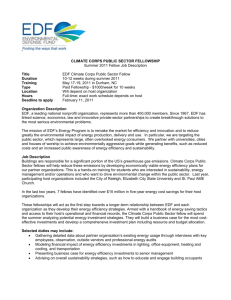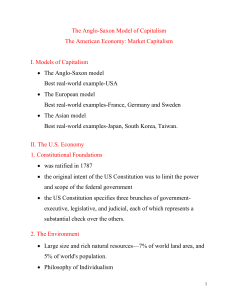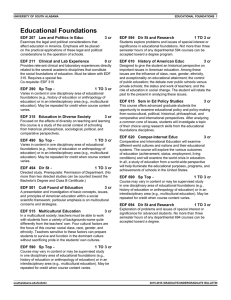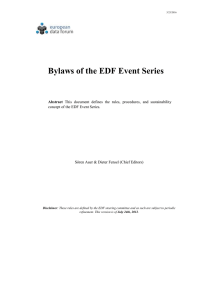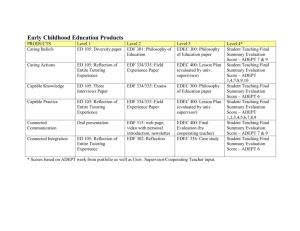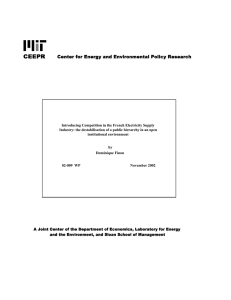A specific example of a Oaxaca decomposition (from Mike Shannon
advertisement
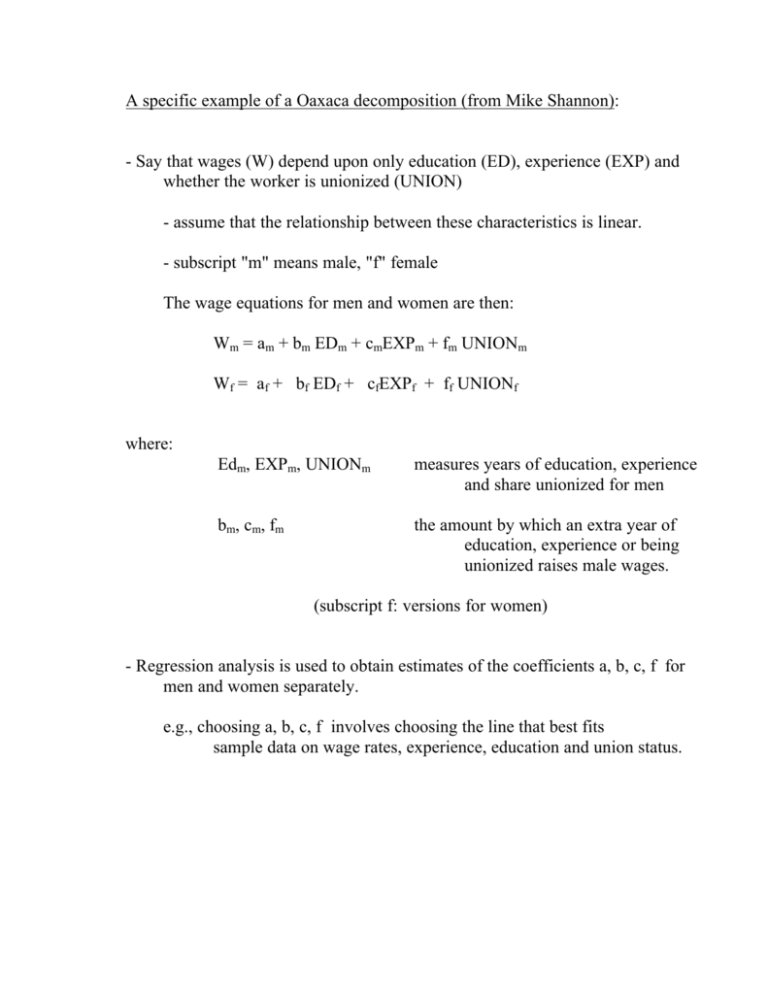
A specific example of a Oaxaca decomposition (from Mike Shannon): - Say that wages (W) depend upon only education (ED), experience (EXP) and whether the worker is unionized (UNION) - assume that the relationship between these characteristics is linear. - subscript "m" means male, "f" female The wage equations for men and women are then: Wm = am + bm EDm + cmEXPm + fm UNIONm Wf = af + bf EDf + cfEXPf + ff UNIONf where: Edm, EXPm, UNIONm measures years of education, experience and share unionized for men bm, cm, fm the amount by which an extra year of education, experience or being unionized raises male wages. (subscript f: versions for women) - Regression analysis is used to obtain estimates of the coefficients a, b, c, f for men and women separately. e.g., choosing a, b, c, f involves choosing the line that best fits sample data on wage rates, experience, education and union status. - Estimated regression goes through sample means. So if W, ED, EXP and UNION are the sample averages these equations hold exactly: Wm = am + bm EDm + cmEXPm + fm UNIONm Wf = af + bf EDf + cfEXPf + ff UNIONf - The gap in average wages is (think of ED, EXP and UNION as values for men and women): average Wm-Wf = am + bm EDm + cmEXPm + fm UNIONm (af + bf EDf + cfEXPf + ff UNIONf) add and subtract: bm EDf , cmEXPf , fm UNIONf Wm-Wf = bm (EDm-EDf) + cm (EXPm-EXPf) + fm (UNIONm-UNIONf) + (am-af) + ( bm-bf) EDf + (cm-cf) EXPf + (fm-ff) UNIONf - first three terms: are the part of the wage gap due to differences in average characteristics between men and women (EXPLAINED) - If men and women had the same levels of education, experience and unionization these terms would be 0. - If education, experience and unionization all raise wages (b, c, f>0): - and if men better educated, have more experience and higher rates of unionization then a positive share of the gap is explained. - the last four terms are the discriminatory part of the wage gap. (DISCRIMINATION / UNEXPLAINED) - Due to differences by sex in how characteristics are "treated" when wages are determined in the labour market. - if a, b, c and f are the same for men and women these terms are zero: the gap then is entirely due to differences in characteristics. For our example, using 1994 data for 16-64 year old paid-workers: Estimated wage equations: Men: Wm = -1.34 + .078 EDm + .27 EXPm + 3.76 UNIONm Women: Wf = -1.80 + .70 EDf + .21 EXPf + 4.62 UNIONf Sample averages: Wage Yrs. Education (ED) Yrs. Experience (EXP) Proportion UNION Men Women $14.74 14.15 13.86 0.32 $11.69 14.56 9.32 0.28 (Gap: $3.05 ) Decomposition: Wm-Wf = bm (EDm-EDf) + cm (EXPm-EXPf) + fm (UNIONm-UNIONf) + (am-af) + ( bm-bf) EDf + (cm-cf) EXPf + (fm-ff) UNIONf = + .078 x(14.15-14.56) + .27 x(13.86-9.32) + 3.76 x (.32-.28) (-1.34+1.80) + (.78-.70) 14.56 + (.27-.21) 9.32 + (3.76-4.62) .28 3.05 = 1.07 + 1.99 Total gap =Explained + Unexplained /Residual This means that (1.07/3.05)=35% of the gender gap is explained by differences in education, experience and unionization rates between women and men. Thus (1.99/3.05)=65% of the gender gap is unexplained. Would we have used a more complete set of explanatory variables, we could claim that this part of the gap is due to discrimination.

